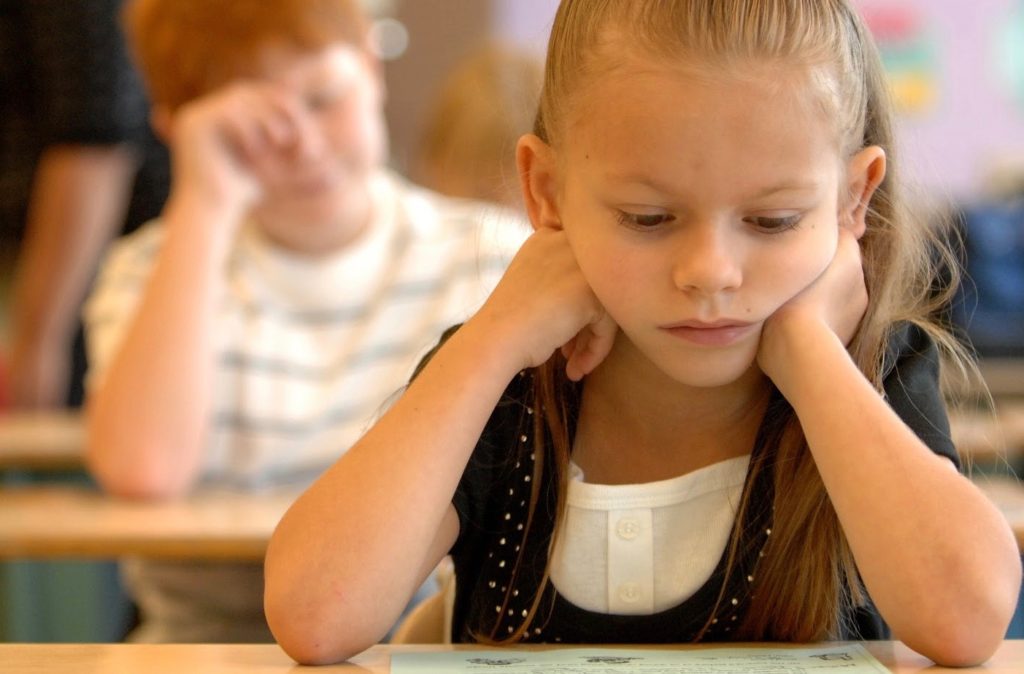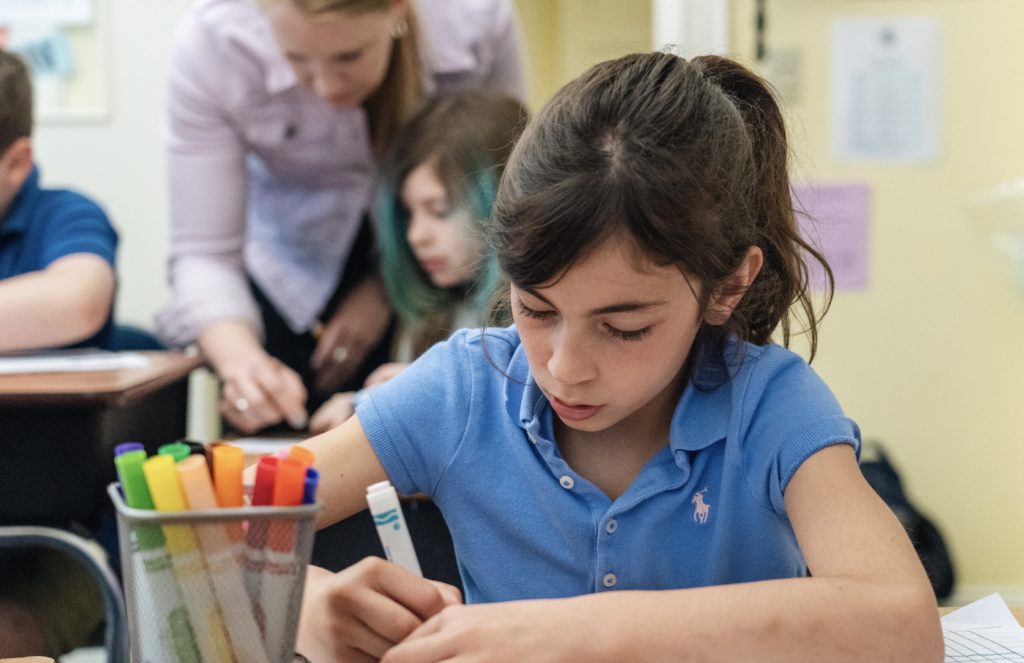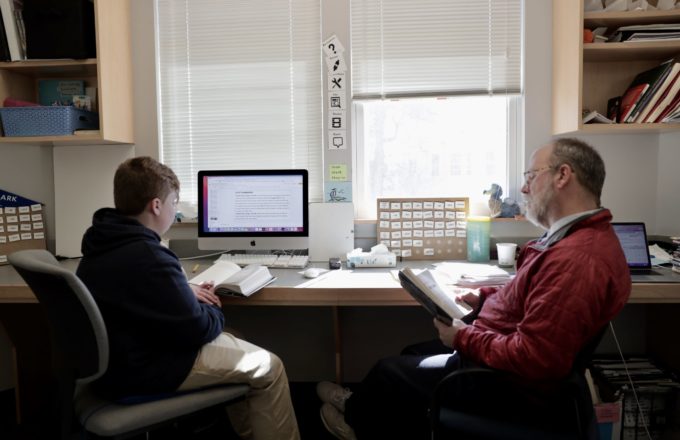Social Communication and Social Communication Disorders
The American Speech-Language-Hearing Association (ASHA) explains social communication as skills that “enable individuals to share experiences, thoughts, and emotions. Social communication skills are needed for language expression and comprehension in nonverbal, spoken, written, and visual-gestural (sign language) modalities” (ASHA, n.d.). Social communication refers to how we use language in social situations, including our ability to communicate nonverbally (ex., the ability to “read the room”).
In 2013, the American Psychiatric Association (APA) added Social Communication Disorder (SCD) to the Diagnostic and Statistical Manual of Mental Disorders, Fifth Edition (DSM-V). They characterized an SCD as a “persistent difficulty with verbal and nonverbal communication that cannot be explained by low cognitive ability” and stated that the disorder “limits effective communication, social relationships, academic achievement, or occupational performance” (APA, 2013).
An SCD can co-occur with other conditions such as Specific Learning Disability (SLD), Developmental Language Disorder (DLD), Autism Spectrum Disorder (ASD), Attention Deficit/Hyperactivity Disorder (ADHD), Traumatic Brain Injury (TBI), or Executive Function deficits. Case in point, ASHA states, “A history of developmental language disorder (DLD) was indicated to be a significant risk factor for SCD. The percentage of children with SCD and a history of DLD (30%) was 3 times greater than that of children with SCD without a history of DLD (9%; Ellis Weismer, Tomblin, et al., 2021)” (ASHA, n.d.). Many children with Language-Based Learning Disabilities (LBLD) struggle to communicate and make sense of their social world.
With this in mind, educators need to be aware of the key elements of social communication outlined below to fully understand behaviors that students may exhibit in the classroom (and beyond).
Key Elements of Social Communication
Pragmatic Language
Pragmatic language is conceptualized in Bloom and Lahey’s model (1978) of three overlapping components of language: form, content, and use. Language use, or pragmatics, refers to cohesive discourse (or conversational exchanges), which can be verbal or nonverbal. An example is the ability to use and interpret tone of voice to communicate effectively. It is important to note that context is essential when examining pragmatic language.
Language Processing
Language processing is yet another piece of the social communication puzzle. Language processing is both the “internal generation of language (expressive) as well as understanding and interpretation of language (receptive) (ASHA, n.d.). For example, we use language processing to recognize sarcasm and humor. Students who are “literal thinkers” may have language processing challenges and misunderstand another person’s intended message.
Theory of Mind and Social Cognition
Some students seem to misperceive others’ intentions or have trouble conveying their ideas, among other social miscues. We can better understand these students when considering Theory of Mind (ToM) and social cognition. ToM allows humans to “predict and interpret the behavior of others” (Ruhl, 2020). It involves recognizing that individuals have different perspectives, thoughts, and feelings. ToM develops and evolves throughout our lifetime and is a foundation upon which social cognition is built. Social cognition focuses on how people process, store, and apply information about other people and social situations.
Executive Functions
Based on the work of theorists such as Brown, Meltzer, and Barkley, our executive functions allow us to coordinate tasks and sustain our efforts toward an end goal. Ward (2014) breaks this down further, stating, “It is critical to understand EF as a self-regulatory process that requires students to demonstrate situational awareness, and then activate nonverbal (visual forethought) and verbal working memory (self-directed talk) in order to achieve a predicted outcome.”
Social Thinking and Cognitive Flexibility
We can break these complex processes down further by examining how social thinking and cognitive flexibility allow for successful pragmatic language skill development. Remember, pragmatics encompasses both spoken and written language. Social thinking “refers to a process we all go through in our mind as we try to make sense of our own and others’ thoughts, feelings, and intentions in context, whether we are co-existing, actively interacting, or figuring out what is happening from a distance (e.g., media, literature, etc.)” (Social Thinking, n.d.). As we move through our day, we use our cognitive (mental) flexibility by “…applying concepts from one context toward solving a problem in another unrelated or new situation” (Perina, 2019). Social thinking informs how we interact and respond to others.
Social Emotional Learning (SEL)
Social Emotional Learning (SEL) is a term many educators are familiar with as a result of recent training initiatives in schools across the country. It is often used as a “catch-all” for social skills, which can lead to some confusion. As defined in CASEL’s Guide to Schoolwide SEL (2020), “SEL is the process through which all young people and adults acquire and apply the knowledge, skills, and attitudes to develop healthy identities, manage emotions and achieve personal and collective goals, feel and show empathy for others, establish and maintain supportive relationships, and make responsible and caring decisions.” Programs such as Zones of Regulation and Responsive Classroom are commonplace in schools as we work to give students tools to help with self-regulation and related skills. So, how does SEL connect to pragmatics and social communication skills? An individual’s ToM, social cognition, and cognitive flexibility are foundations for and woven into social-emotional skills. To show empathy for others —a social-emotional skill— a person often needs to “predict and interpret the behaviors of others” (i.e., ToM) (Ruhl, 2020).
In sum, all of these elements are interconnected and should be considered within the context of social communication. Students navigate their day using pragmatic language skills, ToM, social cognition, social thinking, cognitive flexibility, language processing, and EF. When one or more of these areas are compromised, efforts to effectively communicate are hindered.
As educators, it is also our responsibility to use culturally responsive teaching practices within the context of addressing social communication skills. In her book, Culturally Responsive Teaching and the Brain, Zaretta Hammond discusses a Ready for Rigor Framework. This framework highlights the need to provide students with tools and strategies as they engage in learning through awareness, learning partnerships, information processing, and community building. Furthermore, ASHA reminds us to acknowledge social, linguistic, and cultural diversity in our work with students. For example, teachers can implement culturally responsive teaching practices by building a classroom library that includes books representing their students’ cultures, backgrounds, and home languages. Creating collaborative activities using such books can help students develop empathy and understanding of others’ experiences.
Educators can feel more confident in helping students build social communication skills when they understand its nuances. If an educator has concerns about a student’s social skills, they can reference ASHA’s Social Communication Benchmarks. Educators are also encouraged to make a referral to a professional, such as a speech-language pathologist, adjustment counselor, school psychologist, or neuropsychologist, who can evaluate the student using both formal and informal measures to identify strengths and areas of need.
References
American Speech-Language-Hearing Association. (n.d.). Language in brief. https://www.asha.org/practice-portal/clinical-topics/spoken-language-disorders/language-in-brief
American Speech-Language-Hearing Association. (n.d.). Social communication disorders: Overview. https://www.asha.org/practice-portal/clinical-topics/social-communication-disorder/
American Psychiatric Association. (2013). Diagnostic and statistical manual of mental disorders (5th ed.). American Psychiatric Publishing.
Bloom, L., & Lahey, M. (1978). Language development and language disorders. John Wiley & Sons.
Cherry, K. (n.d.). What is social cognition? Verywell Mind. http://psychology.about.com/od/socialpsychology/g/social-cognition.htm
Collaborative for Academic, Social, and Emotional Learning (CASEL). (n.d.). What is SEL? https://casel.org/what-is-sel/
Collaborative for Academic, Social, and Emotional Learning (CASEL). What is SEL? – Casel Schoolguide. (2020, October 12). Casel Schoolguide. https://schoolguide.casel.org/what-is-sel/what-is-sel/
Hammond, Z. (2015). Culturally responsive teaching and the brain: Promoting authentic engagement and rigor among culturally and linguistically diverse students. Corwin.
Perina, K. (2019, December). 3 ways to improve your cognitive flexibility. Psychology Today. https://www.psychologytoday.com/us/blog/wild-connections/201912/3-ways-improve-your-cognitive-flexibility
Ruhl, J. (2023). Theory of mind in psychology: People thinking. Simply Psychology. https://www.simplypsychology.org/theory-of-mind.html
Social Thinking. (n.d.). What is social thinking? https://www.socialthinking.com/



